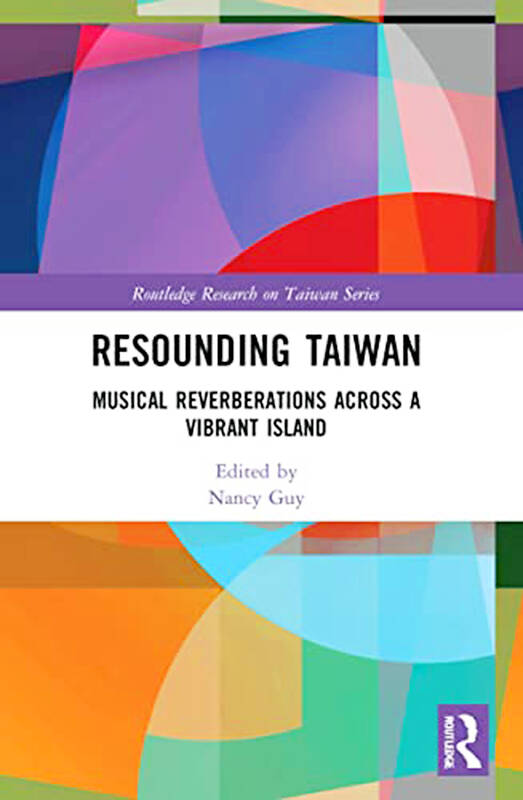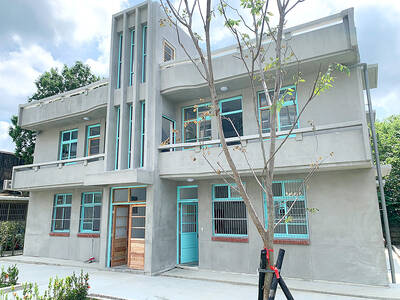“One is hard-pressed to find music mentioned in more than a cursory way, if at all, in recently published Taiwanese studies.” So writes Nancy Guy, general editor of this book of 12 chapters on the subject. The field, she says, has been dominated by political scientists.
Guy is Professor of Music at the University of California, San Diego, and author of Peking Opera and Politics in Taiwan (2005). Eight of the contributors grew up in Taiwan. All got their PhD’s in the US or the UK, however.
Indigenous music, both contemporary and traditional, is the subject of two early chapters, and beiguan (北管) music is prominent in both Hakka and Hokkien cultures. Sacred Christian Hakka hymns also feature, as do musical styles emanating from South-East Asia and now important in northern Taiwan. The Taipei Chinese Orchestra appears, as does the hugely popular music (both in Taiwan and China) of Teresa Teng (鄧麗君), with its echoes of Japanese styles. Finally, the music played by Taiwanese garbage trucks finds a deserved place.

Wang Ying-fen (王櫻芬), a Distinguished Professor and founding member of the National Taiwan University’s Graduate Institute of Musicology, contributes a chapter on the recording of traditional and other music in the Japanese and later periods, while DJ Hatfield looks at the opposing tendencies in Taiwanese Indigenous music to integrate or not to integrate, especially with other Pacific cultures. Focusing on the Amis, he considers, among other things, musical relations between Taiwan and Madagascar, plus bands with a multi-ethnic composition.
GARBAGE TRUCKS
Certainly the most surprising chapter to be found here is the one on the music used by garbage trucks, written by the book’s general editor, Nancy Guy. This music, she argues, indicates “the slow violence of environmental degradation” just as much as the approach of a civic facility.
The original music used was a piano piece called The Maiden’s Prayer by Badarzewska-Barandowsk from 1856. When garbage trucks were first imported from Japan in 1968 this melody was already pre-recorded on them. It was eventually, after much controversy, replaced by Beethoven’s Fur Elise, and then a lot later by “an English sea chantey.”
Guy sees these melodies as a form of “sonic irritant,” as well as boding the arrival of a community service. Nevertheless Taiwan boasts one of the world’s highest recycling rates, and has even been called an island of green in Asia.
Attempts to replace A Maiden’s Prayer on over 1,000 of the island’s garbage trucks, including a telephone poll of possible substitutes, failed and the excessively familiar original tune was reverted to.
Did people need to be entertained or called to their civic duty, and if entertained then by a familiar tune or something new? Either way, garbage truck music became a contentious issue, with at least one school organizing a contest to find a replacement for The Maiden’s Prayer.
THERESA TENG
When Teresa Teng died in 1995 at the young age of 42, grief was widespread throughout the Sino-phone world. Despite coming from a Chinese Nationalist Party (KMT) family, and a military one at that, her popularity knew no bounds. Indeed, her music came to represent the possibility of just such a pan-Chinese consciousness even at the apex of the Cold War.
The multiculturalism of Taiwan in general could be seen as the ground-swell of this entire book, and it can be no accident that the item on Teng has been placed as its final chapter.
Altogether the research for this book appears to have been book and periodical-based. Some of the contributors no doubt did attend concerts and the like, but more, you feel, spent their precious hours in libraries. These, after all, are academics by training rather than music reviewers or journalists who wanted to earn an extra dollar or two at performances.
Of course, Taiwan is famous for its music on the classical front. This will not be the first time I have pointed to its dominance in the Asian Youth Orchestra. Year after year Taiwan comes out on top when the number of musicians, selected by audition, is set against the nation’s total population. The orchestra, incidentally, is in its 33rd year.
But astonishingly the Asian Youth Orchestra is not mentioned anywhere in this book.
This cannot be because of any closure due to the COVID-19 pandemic. Richard Pontzious, the orchestra’s pioneering music director, told me at the time that auditions would continue as usual, only not face to face.
Also, the number of students in Taiwan studying classical instruments is vastly greater than, for instance, those in Hong Kong.
As in so many other spheres, Chinese-style orchestral music incorporates Chinese traditions and distinctively Taiwanese ones. The relative importance of the two is explored by Lee Ming-yen who naturally points out that the two streams oscillated as a result of political changes. Hence presidents Chiang Kai-shek (李登輝), Lee Teng-hui (蔣介石) and Chen Shui-bian (陳水扁) all influenced the Chinese orchestras one way or another, tipping the balance perhaps but never changing the fundamentals of the style of, for instance, the main line-up, the Taipei Chinese Orchestra.
Other chapters are extremely specialist in their subject matter — Hakka hymns, the music of the Yunnan diaspora in Taiwan and the vocal characteristics of various gender roles in the theatre.
PRESERVING TRADITION
One interesting chapter concerns “action plans” to preserve traditional culture. and especially traditional instruments. The author, Chen Mei-chen, was actively involved in one of these, the action to preserve the musical genre known as Koo Khai-Loo, or “the drum that opens the mind,” from 2019 to 2020 in Beigang in Yunlin County. It is a form that probably dates back to 1865.
The Taiwanese production of these “action plans” apparently originated in South Korea (and also Japan). Taiwan’s are younger, but are making good progress.
I have said that some of the contributions in this book have the feeling of an origin largely in libraries, but Chen’s Mei-chen is different. It is awash with conversations with the musicians concerned, and is illustrated by three black-and-white photos attributed to her.
Resounding Taiwan is a useful compendium, especially seeing that its subject matter is, so we are told, rarely visited in academic discourses on Taiwan.
The book’s prices on Amazon are high, US$170 for hardback, US$52.95 for softback and (more reasonably) US$13.70 for Kindle. University libraries are more likely, therefore, to be customers than private individuals.

June 2 to June 8 Taiwan’s woodcutters believe that if they see even one speck of red in their cooked rice, no matter how small, an accident is going to happen. Peng Chin-tian (彭錦田) swears that this has proven to be true at every stop during his decades-long career in the logging industry. Along with mining, timber harvesting was once considered the most dangerous profession in Taiwan. Not only were mishaps common during all stages of processing, it was difficult to transport the injured to get medical treatment. Many died during the arduous journey. Peng recounts some of his accidents in

Taiwan Power Co (Taipower, 台電) and the New Taipei City Government in May last year agreed to allow the activation of a spent fuel storage facility for the Jinshan Nuclear Power Plant in Shihmen District (石門). The deal ended eleven years of legal wrangling. According to the Taipower announcement, the city government engaged in repeated delays, failing to approve water and soil conservation plans. Taipower said at the time that plans for another dry storage facility for the Guosheng Nuclear Power Plant in New Taipei City’s Wanli District (萬里) remained stuck in legal limbo. Later that year an agreement was reached

What does the Taiwan People’s Party (TPP) in the Huang Kuo-chang (黃國昌) era stand for? What sets it apart from their allies, the Chinese Nationalist Party (KMT)? With some shifts in tone and emphasis, the KMT’s stances have not changed significantly since the late 2000s and the era of former president Ma Ying-jeou (馬英九). The Democratic Progressive Party’s (DPP) current platform formed in the mid-2010s under the guidance of Tsai Ing-wen (蔡英文), and current President William Lai (賴清德) campaigned on continuity. Though their ideological stances may be a bit stale, they have the advantage of being broadly understood by the voters.

In a high-rise office building in Taipei’s government district, the primary agency for maintaining links to Thailand’s 108 Yunnan villages — which are home to a population of around 200,000 descendants of the Chinese Nationalist Party (KMT) armies stranded in Thailand following the Chinese Civil War — is the Overseas Community Affairs Council (OCAC). Established in China in 1926, the OCAC was born of a mandate to support Chinese education, culture and economic development in far flung Chinese diaspora communities, which, especially in southeast Asia, had underwritten the military insurgencies against the Qing Dynasty that led to the founding of